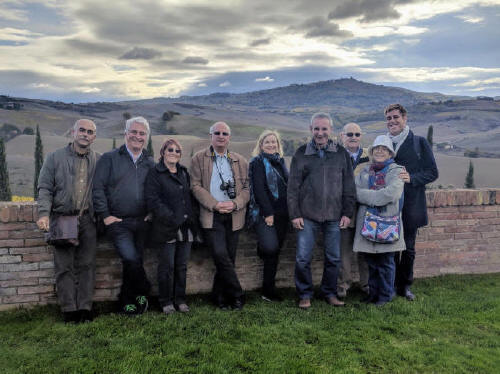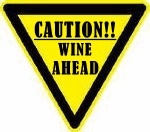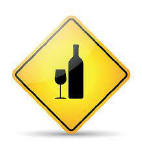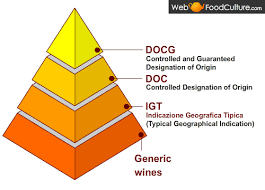| |
 |
||||
 the official symbol of tuscany: a winged horse |
|
 an unofficial symbol of tuscany: great red wine |
|||
| OUR GROUP IN TUSCANY |
|||||
 |
|||||
|
|||||
| CLICK ON ANY THUMBNAIL TO SEE A FULL SIZED PICTURE | |||||
|
Tuscany
is one of the premier wine regions of Italy, and produces some of the
best known wines in the world. The region is best known for Chianti,
Chianti Classico, Brunello, Vino Nobile, and the newest members of the
family, Super Tuscans. In November of 2017, we took a 6 day wine tour
of this region with "The Grape Man",
Haim Gan, and a small group of wine lovers.
Haim Gan is one of the leading wine experts in Israel, and he
accompanied us for the first half of the tour. Our full time guide was
Guy Haran, a wine expert in his own right, and he did a wonderful
job guiding us in the intricacies of the wines of Tuscany. |
|||||
 VIEW FROM THE ATHENA LOBBY |
|||||
| We
stayed in the Athena Hotel in Siena for the entire visit and
drove to a different destination every day. This
is a lovely hotel just inside the city walls of Sienna. It’s a 2 minute
walk from the nearest city wall gate and about a 10 minute walk to
the cathedral. The rooms are nice and large and the services and staff
were great. Breakfast is rich and varied. We enjoyed our time at this
hotel, and it is an excellent central base for visiting Siena and exploring Tuscany. |
|||||
| We spent 6 days "on the ground" on this trip. The first day was a travel day, but we arrived in Rome early in the day so were able to visit a winery on the drive to Siena. The last day was also a travel day, but since our flight was in the evening, we also managed to visit a winery as well as two lovely towns between Siena and Rome. On each of the other days, we visited a different area of Tuscany, each one with a distinctive wine classification. On three of the 4 full days we visited 3 wineries, and on the other day, 2 wineries. That adds up to 13 wineries in 6 days, and we also had some memorable meals. That's hard work!! Here are the details below. | |||||
|
|||||
 |
|||||
| ERIK
BANTI WINERY |
|||||
 ERIK BANTI EXPLAINING THINGS AT HIS WINERY |
The Banti Winery
is located in the Maremma
area, which is the southernmost point of Tuscany and the owner, Erik
Banti, was one of the most interesting vintners we met. Erik has been
making wine here for many years (since 1981), but is originally from
Denmark.
Our tour of the winery with Erik was very entertaining, as he has
developed many original methods and is an energetic storyteller.
We even found square wine barrels at his winery. |
 SQUARE BARRELS AT BANTI |
|||
 LUNCH AT BANTI |
We
also had
lunch at the Banti winery and it was a lovely experience, with Erik as
host and a sumptuous meal set in the vinyard's tasting hall. The best
part was the absolutely fresh and delicious ricotta cheese
we were served, which Erik described as the "best ricotta in the
world"! The ricotta is made by a local dairy, and everybody agreed that
it was the best ricotta they had ever tasted. It's pictured to the right. Lunch was
accompanied by several of the Banti wines and this visit was a great
way to start our trip. |
 ERIK BANTI WITH RICOTTA CHEESE |
|||
| ANTICA
OSTERIA DA DIVA |
|||||
 AT ANTICA OSTERIA DA DIVA |
In the evening, we ate at this
beautiful restaurant. It has lots of atmosphere and beautiful artwork on
the walls. It’s part of an amazing historical building not far from
the Siena Cathedral. We had a lovely tasting menu here. The food
was great and they had a great selection of wine to go with it.
We don’t often have dessert, but the tiramisu at the end of the meal
was incredible and we couldn’t stop eating it! Our only complaint would be that the place was quite noisy. |
 TIRAMISU AT OSTERIA da DIVA |
|||
 |
|||||
 |
Chianti
Classico
is named for where it is grown. Classico is one of seven
subregions within Chianti, and Classicos must be 80 percent
Sangiovese grapes and aged for at least 10 months.The region was established as a
subzone of the Chianti
DOC region in 1967, which itself became a DOCG in 1984; Chianti
Classico became a
separate DOCG in 1996. The Chianto Classico region is located about
halfway between Siena and Florence. Its symbol is a black rooster, and here is the supposedly true story of how that came
about. |
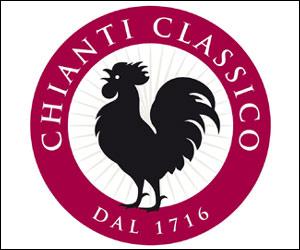 |
|||
| To the left is the Chianti bottle which gave the entire region a bad name for many years. It was cheap wine sold in decorative bottles, which were very popular in the United States. The bottles were very good for holding candles after the cheap wine was gone. Again, "Chianti Classico" is a different wine made in a specific sub-area of Chianti. | what's the difference between Chianto & Chianti Classico? |
||||
| RICASOLI |
|||||
 RICASOLI BROLIO CASTLE |
Ricasoli is
one of the prioneers of wine making in Chianti Classsico
and today is the largest producer in the area. The estate is huge and
beautiful, and includes the castle of Brolio. The castle includes
a private family museum which covers the long family history with the main focus on
family patriarch Baron Bettino Ricasoli who developed the Chianti Classico
formula in 1872. The museum was very impressive, but I have no pictures
as photography is not allowed. However, we did have a comprehensive
tour of the castle, the family chapel and the winery. Our guide was a
nice lady called Nora originally from Argentina. |
 IN THE BROLIO CASTLE CHAPEL |
|||
 THE BROLIO CASTLE |
|
 BARREL ROOM AT RICASOLI |
|||
| VERRAZZANO |
|||||
 THE VIEW AT VERRAZZANO |
Verrazano winery is another winery with a well known castle and a long history of winemaking. The castle and grounds were originally Etruscan, and then became a Roman settlement. Winemaking was noted here as far back as 1150. The Castle became the property of the Verrazzano family in the 7th century. Giovanni da Verrazzano, the navigator and discoverer of the bay of New York and of the majority of the East coast of the U.S.A. was born here in 1485. After the death of the last Verrazzano in 1819, the Florentine Ridolfi family took over, and the estate fell on hard times in the middle of the 20th century. |  AT VERRAZZANO |
|||
 OLD BOTTLES IN THE WINERY ARCHIVE |
In 1958, the Cappellini family took over and restored the estate and the castle to its former glory. Today, Verrazzano is one of the leading producers in Chianti Classico. We had a lively and educational tour here with winery guide Mattheu, and also had a wonderful lunch at the restaurant located within the castle grounds. |
 LUNCH AT VERRAZZANO |
|||
| ISOLE E OLENA |
|||||
 TASTING AREA AND LOVELY VIEW AT ISOLE |
After
visiting 2 of the biggest Chianti Classico producers, our third visit
was to a much smaller and less well-known producer - Isole e Olena. The
name is the product of the merging of 2 adjoining estates (Isole and
Olena) into one in the 1950's. The
winery has 290 hectares, of which 50 hectares are vinyards. The winery
has reached prominence due to the work of its current owner and
winemaker, Paulo De Marchi. Paulo is a fourth generation
winemaker, and has developed several methods to combine tradition with
innovation. |
 LOVELY ENTRANCE AT ISOLE |
|||
 THE WINES WE TASTED AT ISOLE |
Along with the expected Sangiovese grape, he
also grows Cabernet and Merlot grapes and not all of the estate's wines
meet the Chianti Classico classification's rules. The winery's premium
wine is Cepparello, "what Isole e Olena is all about", according to
Paulo. It is extremely refined 100% Sangiovese table wine that would
have been a Chianti Classico Riserva had the DOC commission allowed
Chianti Classico to be made from just Sangiovese. It is classified as
"IGT" but it is an excellent wine. The classification rules are changing and so
probably will the classification of Cepparelo We were given a tour and tasting by Paulo's kind and lovely wife, Marta. The wines were very nice and we even got a taste of the estate's Vin Santo! If you are interested in more information about Isole e Olena, this link will download a PDF file with the full story, including its selection of wines. |
 TASTING WITH MARTA AT ISOLE e OLENA |
|||
 |
|||||
| Brunello di Montalcino
is Tuscany's most famous wine, and one of Italy's best. There is a long
standing argument over which is Italy's greatest wine - Barolo or Brunello.
(To
avoid confusion, Barolo is not from Tuscany, but rather the biggest and
best wine of the Piedmont in the north of Italy). These are both great
wines, although I prefer Vino Nobile to both of them. Brunello is made
of 100% sangiovese grosso grape, and doesn't get to market for at least
4 years from harvest. Those 4 years include at least 2 years in the
barrel and at least several months in the bottle. The reserve is aged
longer, and doesn't get to market for 62 months from harvest. Any
decent brunello needs 10 or more years from harvest to reach a mature
drinkable state. It is grown in the region near Montalcino in
southernTuscany and is produced by over 200 producers. Brunello is
classified as DOCG. |
|||||
| CASTELLO BANFI |
|||||
 COLLOSAL BARREL HALL AT BANFI |
Banfi
winery was founded in 1978 by the Italian-American brothers, John and
Harry Mariani.
Since then, the winery has grown to become of the largest wineries in
Italy, with production both in and outside of Italy. The winery is
known for modern and innovative winemaking techniques. Everything here
is big and modern. Check out the pictures to the right and left. To the
right is the gigantic store and tasting area, and to the left is the
cavernous barrel aging room. Our guide was a well informed woman named
Michaela. |
 THE IMPRESSIVE SHOWROOM AT BANFI |
|||
| ALTESINO |
|||||
 AT ALTESINO |
Altesino is
a leading producer of the wines of Montalcino, and
is responsible for many wine making innovations. It is also a beautiful
winery set
in the hills with a lovely view of nearby mountaintop villages. Our
guide, Matthieu
gave us a very thorough tour of the winery, and one of the most
professional tastings we did. And, of course, the wines were excellent. |
 TASTING AT ALTESINO |
|||
| LUNCH AT BOCCON DA VINO |
|||||
 THE VIEW AT BOCCON di VINO |
Alisa and I had eaten at Boccon
DiVino about 10 years ago and were disappointed. We wouldn’t have gone
back were it not on the schedule of this trip, so we had no choice in
the matter. Forunately, this visit was very different. We were
very happy with our lunch, which included several lovely courses, and
all were just great. The restaurant is informal, with great views from
the patio. It’s also open for both lunch and dinner.
The best dish, in my opinion, was the slow cooked beef in red wine with chicpeas, shown to the right. The beef was cooked to perfection. |
 SLOW COOKED BEEF IN RED WINE |
|||
| DINNER AT BOTTEGA DEL 30 |
|||||
 STUFFED QUAIL AT BOTTEGA DEL 30 |
This
is a wonderful 1 star Michelin restaurant located about 30 minutes east
of Siena. It is run by a lady who is originally from France and the
cuisine is definitely more French then Italian. We had a wonderful
tasting meal, which included 5 courses and then a fantastic dessert of
3 elements. The service was impeccable and proprietress Elena was there
overseeing our entire meal. The restaurant is located in a rustic free-standing stone house (maybe a renovated farmhouse) and inside has a warm and lovely ambience. |
 ELENA OVERSEEING OUR MEAL AT BOTTEGA DEL 30 |
|||
 |
|||||
a concise history of the development of super tuscans 5 super tuscan super stars the rise and fall of super tuscans super tuscans history & recommendations the huffington post on the wines of bolgheri technical details about bolgheri wines |
Bolgheri
is in on the southern coast of Tuscany and is home to wines known as "Super
Tuscans".
These super Tuscans developed due to Tuscan winemakers rebelling
against the restrictions of the classifcation system, and the desire to
make better wines. These winemakers wanted to use grapes other than the
predominant grape of Tuscany, (sangiovese), and the result was
excellent, robust wines made from cabernet. merlot, syrah and other
grapes. Since these wines didn't fit into any of the existing
classifications, they had to be labeled as "vino tavola", the lowest
classification. |
||||
| On the other hand, they were great wines, and they met with great popularity outside of Italy, particularly in the United States. Prices increased to a level unheard of for "table wines", and the IGT classification was invented to solve the problem. In 1983, the region was granted DOC status, with one separate exception. That exception is Sassicaia, which in 2013, was granted its own DOC (Bolgheri Sassicaia DOC), the only wine from a single estate in Italy to enjoy this privilege. |  OLD BOTTLES OF WINES FROM SIGNIFICANT EARLY VINTAGES 1946 & 1958 |
||||
| Sassicaia is one of the leading wineries in the Bolgheri region, and one of the pioneers in making these superb wines. The first cabernet vines were planted by Marchese Mario Incisa della Rocchetta, the founder of the Sassicaia winery in the the late 1940's. As they say, all the rest is history. The wines were introduced to the market place in the 70's, were met with critical acclaim, and other vintners copied the trend. Today there are about 60 producers in the Bolgheri area. | |||||
| SASSICAIA | |||||
 BARREL AGING AT SASSICAIA |
It
was very appropriate that our first visit in Bolgheri was to Sassicaia.
As I described above, Sassicaia was the pioneer and is still one of the
leading wineries in Bolgheri. The estate has lots more on it than wine,
including agriculture, horse breeding, and other things. We had a
lovely visit, which included tasting some great wines, and visiting
the the aging rooms. The beautiful setting for our tasting is
shown to the right and one of the barrel rooms is shown to them left.
Sassicaia has always been an innovator, and that extends to what we saw
in the barrel aging room. Look closely at the barrels in the picture to
the left. They are on a metal framework with wheels under all the
barrels. This allows the barrels to be turned easily during the aging
process. |
 TASTING TABLE AT SASSICAIA |
|||
| MICHELE
SATTA |
|||||
 AT SATTA WINERY |
The Michele
Satta Winery
has existed since 1991 and grows and uses Sangiovese and Syrah grapes
along with the Cabernet Sauvignon and Merlot which is the basis of the
Bolgheri wines. The premier wine of the winery is "Piastraia", which is
a balanced blend of Cabernet, Merlot, Syrah and Sangiovese. We found it
to be the best of the wines we tasted at Satta and several of us bought a bottle
or 2. We had a tour of the winery, which is very close to the
seashore, and also had a wonderful lunch at the winery. |
 AT SATTA WINERY |
|||
 THE VIEW FROM SATTA WINERY |
|
 OUR GUIDE, GUY CHATTING WITH MICHELE SATTA |
|||
| GRATTAMACO | |||||
 TASTING WITH VIEW AT GRATTAMACO |
This beautifully situated winery in the hills of Bolgheri is second to
Sassicaia in the historical chronology of winemaking in Bolgheri. Most
of Bolgheri's producers are located at sea level, while. Grattamaco is
at 100 meters above sea level. This makes for great scenery as well as
great wine. All the grapes of Grattamaco are organically grown. |
 TASTING AT GRATTAMACO |
|||
| DINNER AT OSTERIA DE
LOGGE |
|||||
 DINNER AT OSTERIA de LOGGE |
Osteria le
Loggia is located right in the center of Siena, not far from the
cathedral. Our group had a lovely meal here. The restaurant has a very
eclectic interior with walls covered with cupboards filled with wine
bottles, books, and various memorabilia. The food was excellent. All the dishes were great, and the best dish I had was the organic roasted lamb with vegetables cooked Tuscan style. The service was also outstanding. |
 LAMB RIBS AT OSTERIA de LOGGE |
|||
 |
|||||
| Vino Nobile
di Montepulciano
is another great wine of Tuscany, although it is much less well known
than its better known neighbor Brunello. It's similar in body and
texture, but it is actually quite different. It's also primarilly the
sangiovese grape, but it may be anywhere from 70% to 100%. It also may
have other grape varieties included. It must be aged at least 26
months before going to market (reserve for 36 months), which must
include at least 1 year in the barrel. It has 2 main advantages over
Brunello for the average wine drinker: it is more reasonably priced
than Brunello, and it is generally ready to be
drunk in 5-7 years. Like Brunello, it can age for many more. Vino
Nobile is classified DOCG. |
 |
||||
| CARPINETO | |||||
 THE VIEW AT CARPINETO |
If I
had to grade the winery visits on a scale of 1 to 10 (disregarding
winery lunches), our visit to Carpineto was a 10. Carpineto is one of
the biggest producers, and one of the most prestigious names in all of
Tuscany, and we were accompanied royally on our visit by Antonio
Zaccheo, the son of the founder, and an assistant, Nadine. We
toured the vines, the barrel rooms, the lookout tower, wandered around
with the vinyard dogs, and were given an impressive tasting with 5
wonderful wines, as well as a professional power point presentation
about the winery. |
 THE CARPINETO WINERY "MUSEUM" |
|||
 TASTING AREA AT CARPINETO |
As noted,
this is a big winery producing about 3 million bottles a year, with
estates in all the major regions of Tuscany. The wines are sold in over
70 countries. Here is a video
of 2-3 minutes, on the Carpineto web site, showcasing the exact facility we
visited near Montepulciano, which I assume is the winery's
headquarters. |
 THE WINES WE TASTED AT CARPINETO |
|||
 PICI PASTA AT RABARBARO |
At the end
of the visit to the winery, we went to lunch, as guests of the winery.
We ate at a local restaurant called Rabarbaro,
and enjoyed some more of the Carpineto wines. Antonio had other
business to attend to and we were accompanied at lunch by Nadine.
The restaurant seems simple, but the food is great and the owner was
there to chat with us. The specialty here is simple but great local
Tuscan fare. To the left is a picture of a dish of "Pici", the typical pasta of the Siena
area. |
 TENDING THE FIRE AT RABARBARO |
|||
| IL MACCHIONE |
|||||
| On
this day, we went from the one of the biggest and most sophisticated
wineries (Carpineto) to one of the smallest and most traditional and
environmentally respectful (Il Macchione). This small winery is run by 2
brothers and is definitely still a modest family run winery. The
contrast with Carpineto couldn't have been greater, but don't
misunderstand me - I love these small family run wineries. There was no
gaudy tasting room, and certainly no power point presentation, but the
love and passion and dedication of Simone, the owner, was just as
impressive as any
wine tasting we took part in. Our tasting was in a room which I think
is more a
storereroom than a tasting room, but the Vino Nobile we tasted
here was absolutely
terrific. Most of the group bought a bottle here. |
 AT IL MACCHIONE |
||||
| BOSCARELLI | |||||
 AT BOSCARELLI |
Boscarelli
is another small family owned winery dedicated to making wine in the
traditional way. Founded in the 1960's, the winery's main production is
Vino Nobile, although it does make some other wines. The winery has 14
hectares of vines, and 80% of them are Sangiovese. We had a very
friendly tour and tasting here. |
 AT BOSCARELLI |
|||
| DINNER
AT TAVERNA
DI SAN GUISEPPE |
|||||
 TAVERNA di SAN GUISEPPE |
We had a lovely 5 course dinner
at this restaurant which is located in the center of Siena. The
restaurant is set is an ancient Etruscan home and is very atmospheric.
The place was packed and rather noisy, but the food was mostly
excellent and the service very friendly.
Except for one dish, our meal was fantastic. The below average dish was the ribolita (hearty Tuscan bean soup) which was bland and disappointing. The other dishes were all excellent. The standout dishes were gnocchi with ricotta cheese sauce and truffle, and wild boar cooked in milk. |
 WILD BOAR AND BEEF AT SAN GUISEPPE |
|||
 |
|||||
| Our flight
home was in the evening, so we had the whole day to get from Siena to
Rome. We made three stops, and had lunch at the only winery we visited. |
|||||
| CASTIGLIONE
DEL LAGO |
|||||
| Castiglione
is a cute little town on the western shore of Lake Trasimino, very near
the border with Tuscany. It’s up on a small hill, and provides lovely
views of the lake. It has one long main street which is filled with
stores and restaurants - mostly stores selling local crafts and
souvenirs. It's a nice place for a stop on the road between Rome and Tuscany or Umbria. |
 CASTIGLIONE del LAGO |
||||
| ROCCAFIORE WINERY |
|||||
 THE VIEW AT ROCCAFIORE |
Roccafiore
is located near Todi which is in Umbria.
It is a young winery, founded in 2000, as part of a countryside resort,
with an attached wellness center and restaurant. The buildings here are
very modern, and are set in beautiful countryside with lovely views in
every direction. The wine produced here combines Umbrian traditional
methods with technological innovation. They make a selection of
wines, with the premium wine here being "Sagrantino di Montefalco ".
Sagrantino is the indiginous grape of Umbria, and is one of my favorite
Italian wines. |
 TASTING AT ROCCAFIORE |
|||
 DINING AT ROCCAFIORE |
We had lunch at the winery, and the restaurant was surrisingly good. It was by far the best winery lunch we had during our tour of Tuscany. Firstly, it is a real restaurant which is part of the resort, and is quite elegant. The service was professional and the food was excellent. To the left is a picture of our lunch table, and to the right is a picture of one of the pasta dishes. |
 PASTA BOLOGNESE AT ROCCAFIORE |
|||
| ORVIETO |
|||||
| Orvieto is the place everybody (well, almost everybody) stops at between Tuscany and Rome, in one direction or the other. It's a logical place to stop if you want to take a break, have lunch in an interesting place, or just visit this interesting little town. It's about 1.5 hours north of Rome right on the A1 highway between Rome and Florence. It's up on a cliff, and is accesssible via car, or funicular. We used the funicular. From the station at the top, it's a walk of several minutes to the beautiful cathedral, which is one of the major attractions here. |  ORVIETO CATHEDRAL |
||||
 BEAUTIFUL ARTWORK IN ORVIETO CATHEDRAL |
Another
major attraction is the Orvieto underground,
which is a complex of tunnels and caves dating back to the Etruscans.
There are guided tours available, which take about an hour or so. We
arrived at Orvieto late in the day so there was no time for this
particular activity. Orvieto is also known for its local wine, Orvieto
Classico, which is a light white wine. By the time we were done in
Orvieto, it was dark and time to head to the airport. |
||||
 |
|||||
| SIENA |
|||||
| Siena is
the most centrally located city in Tuscany, and in my opinion, is far more pleasant
to visit than Florence. It’s smaller and more compact, and it’s not
flooded with tourists. It’s easy to walk the whole town and its
historic center. The narrow streets are filled with stores and
restaurants, and the cathedral, as well as the Piazza del Campo are must visits. Piazza del Campo is where the annual Palio horse race is held in July and August. Because of our
busy winery schedule, we didn't have a whole lot of time to wander around
this lovely town, but we did just that every chance we had. That's how we came across the bakery described below. |
|||||
| PASTICCERIA BINI | |||||
| It's
not
often that a bakery is one of the highlights of a trip to Italy, but
this place was fabulous. I might say that it “takes the
cake”. Bini is located in the old town of Siena and was just a 2
minute walk from our hotel. The baked products here are absolutely
delicious, all hand made, and we even took some home with us. Our
favorite item was the “ricciarelli” which are classic soft Siena
cookies made of almond paste and lots of sugar. They were absolutely
delicious. Visiting Bini was truly one of the highlights of our stay in
Siena! |
 RICCIARELLI AT BINI |
||||
 |
|||||
| TRIPSAVVY - THE 10 BEST PLACES TO VISIT IN TUSCANY |
|||||
| DISCOVER TUSCANY |
|||||
| CHARMING TUSCANY |
|||||
| SIENA - IN ONE DAY BY DISCOVER TUSCANY |
|||||
| 3 DAYS IN SIENA - BY THE TELEGRAPH |
|||||
| MAREMMA'S COAST | |||||
| THE GUARDIAN - HOW TO DO TUSCANY ON A BUDGET | |||||
| FOOD & WINE - THE BEST WINERIES TO VISIT IN TUSCANY |
|||||
| HOW TO RECOGNIZE VINO NOBILE |
|||||
| BEST PRODUCERS OF BRUNELLO |
|||||
| HOW TO STORE AND POUR YOUR BRUNELO |
|||||
| TRAVEL & LEISURE - THE BEST WINERIES IN TUSCANY |
|||||
